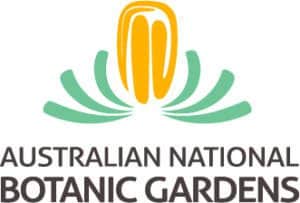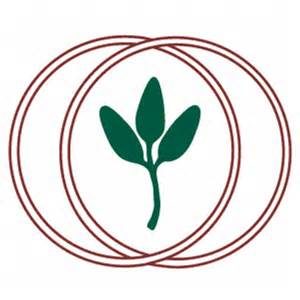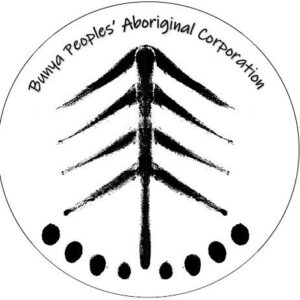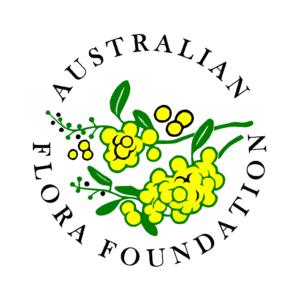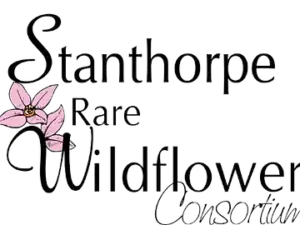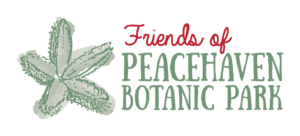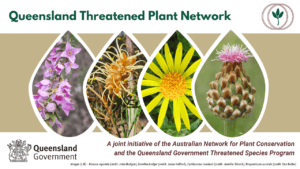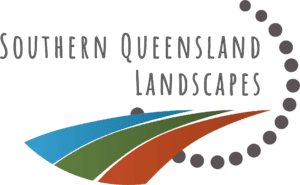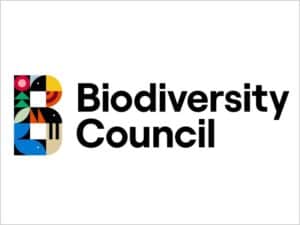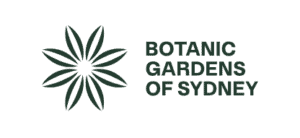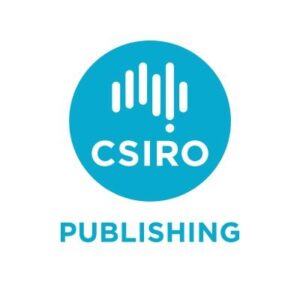
Speakers
Special Guest Speaker: Costa Georgiadis

About Costa
Costa almost needs no introduction. He is a landscape architect, environmental educator, author and has been a presenter of gardening television shows for decades, starting as co-creator and host of Costa’s Garden Odyssey on SBS before becoming a host on ABC’s iconic Gardening Australia program in 2013, continuing to this day.
Beyond the screen, Costa is heavily involved in promoting the importance of biodiversity and preserving habitat, through sustainable gardening and land management. He is a prolific public speaker and an Ambassador for Junior Landcare, sharing his knowledge with a wide variety of audiences. He lives and breathes gardening, relishing the natural world and our connection to it.
Costa will be giving what’s sure to be a very entertaining and illuminating talk on how to get more people interested in native plants and their conservation.
Opening Address: Professor Stephen Hopper
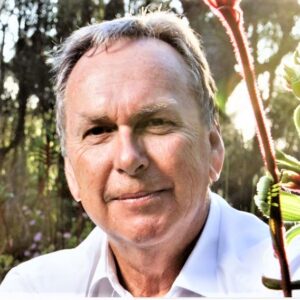
About Stephen
Prof. Stephen D. Hopper AC has served as Director (CEO and Chief Scientist) of the Royal Botanic Gardens, Kew, UK (2006-2012), and as Director (CEO) of Kings Park and Botanic Garden (1992-2004) in Perth, Western Australia. He has been involved in flora conservation research and academic teaching in conservation biology at The University of Western Australia, from which he graduated with a BSc (Hons) in 1974, PhD in 1980, and Honorary DSc in 2010. He also holds an Honorary DSc from the University of Sussex 2012.
Currently, he works as Professor of Biodiversity at The University of Western Australia, Albany campus, since 2012. Professor Hopper investigates the ecological, evolutionary, conservation and sustainability aspects of biodiversity on old, climatically buffered infertile landscapes (Ocbils). He has a special focus on plants of granite rock outcrops, and on the Haemodoraceae, eucalypts and orchids. He also leads a small team researching links between Aboriginal and scientific knowledge systems of biodiversity with Noongar Aboriginal Elders.
Abstract - Reflections on threatened plant conservation in Australia since the 1970s
I commenced work as the first Australian/State government researcher in flora conservation in 1977 as a result of new legislation transferring flora conservation responsibilities from the WA Forests Department to the Department of Fisheries and Wildlife. The amendments to the Wildlife Conservation Act included for the first time provisions for special protection for threatened species (Declared Rare Flora – DRF). Also the Act was amended to bind the Crown for the first time, requiring all government departments to seek the Minister’s approval to take DRF. These provisions assumed that data could be acquired on the taxonomy, geographical distribution, rarity and threatening processes of DRF. My task was to establish such information if it didn’t already exist in what became one of the world’s first 25 Global Biodiversity Hotspots in 2000. One of the biggest threats facing DRF proved to be destruction of populations in ignorance by government agencies, business and private individuals.
Slowly, after the Western Australian Herbarium records and taxonomic literature were examined, a program of field surveys and biological studies was initiated. This was before the days of DNA sequencing, of the widespread availability of GPS, and of large data bases such as the Australian Virtual Herbarium being in place. Today we can generate what then took years of manual work in microseconds in data bases and genome sequencers. I tried a range of techniques to advance the data shortfall.
Atlas projects involved citizen scientists mapping WA orchids and banksias Australia-wide. With the Main Roads Department, we came up with inverted yellow hockey sticks to mark verges with DRF that are still in use today. We advanced beyond alpha taxonomy by applying biological species concepts and genetic techniques. And ecologically, experimental techniques helped refine understanding of threatening processes. I will cover a little of these historical and more recent approaches in this talk to highlight advances, setbacks and brief reflections as to where we sit today in Australia in threatened plant conservation.
Keynote Speaker: Oliver Costello
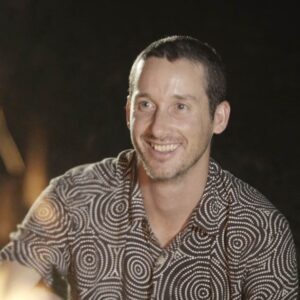
About Oliver
Oliver Costello is a Bundjalung man from the northern rivers of NSW, with a diverse range of personal and professional expertise in culturally connected stewardship of Country. He is currently focused on First Nations knowledge and practice in caring for Country through regenerative cultural practices that support preparedness, recovery and resilience in relation to fire, floods and storms. He has extensive experience working within the Indigenous land and sea management, conservation and cultural heritage management sectors and has been particularly interested in empowering Aboriginal perspectives on fire, threatened and culturally significant species. Oliver set up the Firesticks initiative in 2009 and was a founding Director of the Firesticks Alliance Indigenous Corporation in 2018.
He currently serves as the Executive Director of the Jagun Alliance Aboriginal Corporation and is the Vice President of the Northern Rivers Fire and Biodiversity Consortium.
Abstract - Learning from Country
Meeting the impact of climate change requires culturally inclusive ways of learning from Country to share knowledge about understanding, protecting and healing Country.
Jagun Alliance are key collaborators on the Conservation Futures Integrated Knowledge System (IKS) being developed in partnership with Melbourne of University (UoM) and Bush Heritage Australia (BHA) and an extensive network of NGO, research, government and First Nations partners. The IKS is built on foundational principles of protecting Indigenous Cultural and Intellectual property and data sovereignty.
The vision for Conservation Futures is to create a place to understand, protect and heal Country (land, water, sky, plants, animals and people) through recognising, safeguarding, and weaving knowledge systems. The IKS provides pathways for First Nations and local communities to store, use and share cultural knowledge in the form of spatial, audio-visual, narrative and other data. A core capability of the IKS is that knowledge holders can choose where and how to share their knowledge with others, retain control over that knowledge and how it may be used or reproduced, and view it alongside other open source conservation data.
The IKS will support communication, engagement and decision-making by First Nations groups, land managers, business, community and government, and aims to help guide strategic and regional land-use planning, funding and investment that will lead to better environmental outcomes.
Jagun Alliance is leading a case study integrating Bundjalung knowledge into the IKS, guided by Bundjalung Elders and knowledge holders. This presentation gives a feature review of the IKS and demonstration looking at Bugam butherun (Black bean tree stories) to show how it is used to share cultural knowledge in a safe way that can support conservation outcomes.
Dinner Speaker: Professor Hugh Possingham
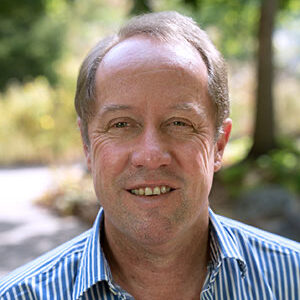
About Hugh
Professor Hugh Possingham is currently a Professor of Mathematics and Conservation Science at The University of Queensland, Chief Scientist at Accounting for Nature, Lead Councillor at Biodiversity Council and Vice President of BirdLife Australia, to go with an impressive resume of board positions and community roles.
Notably, Hugh was Queensland Chief Scientist in the Department of Environment and Science from 2020-2022 and was also the co-creator of Marxan conservation solutions software.
Hugh will be speaking at the Conference Dinner, which starts at 7pm on Tuesday 15th October, at the Cobb+Co Museum. His talk will be titled “Making smart plant conservation decisions”.
Plenary Speakers
Living on the Edge
Dr James Clugston
Research Fellow, Cycad Genomics and Conservation – Western Sydney University
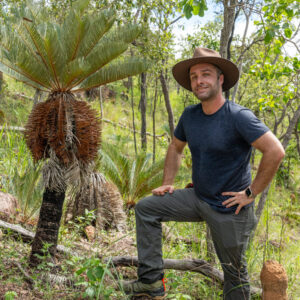
About James
Dr James Clugston is a conservation biologist with broad research interest in the molecular diversity and evolution of gymnosperms and angiosperms, with a focus towards species conservation of cycads (Cycadales). James is passionate about cycads due to their interesting biology and unique adaptations that have allowed them to survive for millions of years. The focus of his recent research is the development of new molecular techniques to better understand cycad genetic diversity and apply this to their conservation worldwide. In his work he uses a broad range of molecular techniques and approaches in conservation genomics, systematics, phylogenetics, and plant evolution. James is also the co-chair for the Global Conservation Consortium for Cycads, Australia and he is an active member of the IUCN SSC Cycad Specialist Group. James has recently returned from four very successful field trips (NSW, Qld, Thailand, South Africa) sampling cycads for genetic analysis and will share conservation stories from those places.
Abstract - A path forward for cycad conservation in Australia
Cycads are amongst the most threatened organisms globally, with continuing declines in populations driven by natural and human activates. Australia represents a biodiversity hotspot for cycads containing 22% of the world’s cycad diversity, and although populations were once considered healthy and stable, there evidence of decline of cycad populations here and globally. Initiatives that bring together cycad specialists and conservation scientists are being used to gather knowledge and create action to halt declines. Among these, the Global Conservation Consortium for Cycads (GCCC) has been launched worldwide and in Australia, driven by the Botanic Gardens Conservation International (BGCI) and the IUCN Cycad Specialist Group. The Australian effort is using a regional steering committee and species stewards to support cycad conservation. Here, I share the primary objectives for the GCCC in Australia: guiding the development of ex-situ assurance colonies for conservation-significant species, updating the IUCN Red List and developing networks of species stewards though citizen science programs. Collaborative research is also being used to forge a new understanding of the genetic diversity of cycads in Australia using genomic approaches. A new universal genetic marker set is planned that can be applied across all extant cycad lineages (Cycadaceae and Zamiaceae). I will outline how our new marker set can address conservation related questions and how it can be used to differentiate interspecific and intraspecific level differences in populations to understand species boundaries, evolutionary relationships, detect hybridisation and create forensic applications for tackling illegal trade in cycads. Co-authors: Rachael V. Gallagher, Vanessa Handley and M. Patrick Griffith.
Dr Carol Booth
Stanthorpe Rare Wildflower Consortium
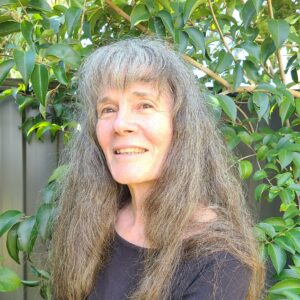
About Carol
Carol spends most of her time as a policy analyst, advocate and writer for environmental NGOs, with a strong focus on invasive species. On other days, she reaps the pleasures of life among plants and lizards on a nature refuge property on the Granite Belt. As a member of the Stanthorpe Rare Wildflower Consortium, Carol has conducted surveys for rare plants, prepared threatened species listings and developed management recommendations. She has a PhD in biology and one in environmental philosophy focused on motivations for nature conservation.
Abstract - Local communities helping rare plants
We live in an age of intensifying and multiplying threats pushing many more plants towards extinction. The standard government processes – threatened species listings and recovery plans – are failing from a want of commitment and resources. And with subtler charms than birds and mammals, plants elicit less public sympathy and conservation attention.
One way forward is to better empower and motivate local communities to take on threatened plant recovery. Using the Stanthorpe Rare Wildflower Consortium as a case study, I probe what is needed – partnerships with government and experts to ensure technical support, the involvement of local movers and shakers, natural history stories to bring plants to life and the fostering of community pride in the local flora.
Navigating Natural Disasters
Dr Darren Crayn
Australian Tropical Herbarium
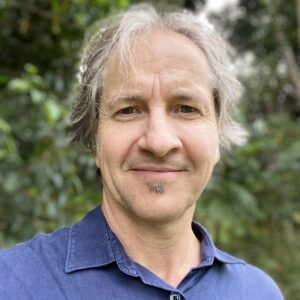
About Darren
Darren’s research is focused on the origins, evolution, classification and conservation of plants and deals broadly with the questions: how many plant species exist, where do they occur, how are they related, how have they evolved, and how can extinction threats be better understood and mitigated? His research is:
• discovering and documenting new plant species and determining the evolutionary relationships among them,
• mapping the distribution of ecosystems, species and genetic variation across the landscape,
• uncovering the deep-time origins and ancient migration pathways of plants that are found in Australia today
• assessing and mitigating extinction threats such as climate change and plant pathogens.
Since 2008 Darren has been Director of the Australian Tropical Herbarium, a joint venture of James Cook University, the CSIRO and the Qld Dept. Environment, Science and Innovation.
Abstract - [Un]natural disasters: impacts and responses for threatened plant species in protected Wet Tropics World Heritage rainforests
That anthropogenic climate change poses a critical threat to plant biodiversity is beyond reasonable dispute. Natural disasters related to changing weather patterns, such as wildfires, heatwaves, storms, and extreme rainfall events are predicted to increase in frequency and/or severity and pose growing risks for threatened species. While global efforts to reduce greenhouse gas emissions must continue, locally, where it matters for conservation of threatened species, debate and action should focus on adaptation and mitigation.
Australia’s Wet Tropics, which contains over 700 endemic and 350 threatened plant species, is afforded gold-standard legislative protection associated with its World Heritage status, but climate change is one key threat not controlled by such protection. Plant species that are endemic to isolated tropical mountain peaks are particularly vulnerable, as upward migration to track climate is severely bounded. For the 70+ plant species endemic to the mountain tops (> 1000 m elevation), environmental niche modelling indicates available habitat will contract drastically by 2080, and for at least seven species, may disappear altogether. Flooding and landslips resulting from extreme rainfall associated with storms are additional key threats at lower elevations. Tropical Cyclone Jasper (Dec. 2024) for example, caused more than 10,000 major landslips in the northern Wet Tropics, the great majority along fast flowing creeks and streams on steep slopes, imperilling riparian specialists.
This talk will discuss some of the opportunities available for adaptation and mitigation of climate impacts on threatened species in protected areas, using examples from Australia’s Wet Tropics.
Fighting Feral Pathogens
Dr Geoff Pegg
Seniour Principal Forest Pathologist – Queensland Department of Agriculture and Fisheries
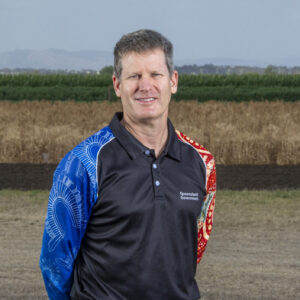
About Geoff
Dr Geoff Pegg is a Senior Principal Forest Pathologist and Team Leader Forest Production and Protection with the Department of Agriculture & Fisheries, Queensland. Prior to this, Dr Pegg worked as a Biosecurity officer with Australian Quarantine. Dr Pegg has more than 24 years’ experience as a forest pathologist working on a range of diseases impacting commercial forest species. For the last 14 years, following the arrival of Austropuccinia psidii (Myrtle rust), Dr Pegg has focussed his research towards the environmental space, studying the impacts of Myrtle rust on native Myrtaceae and associated ecosystems. Dr Pegg has been working in partnership with Indigenous groups to develop and deliver projects to address exotic pests that threaten the cultural and environmental biodiversity values unique to Australia. This includes Myrtle rust and the more recent decline of Bunya pines in the Bunya Mountains National Park.
Abstract - Myrtle rust in Queensland: current and future challenges in managing the impacts
Myrtle rust is a disease caused by the exotic rust fungus Austropuccinia psidii. Since arriving in Australia in 2010, Myrtle rust has become established in some of Queensland’s most iconic and biodiverse ecosystems. Impact on different species has been recorded across the wetter, eastern parts of Queensland in coastal heath, littoral, subtropical and tropical rainforest, wet and dry sclerophyll, and sand island ecosystems, including the World Heritage areas of Gondwana Rainforests (Springbrook, Mt Barney, Lamington NP), K’gari (Fraser Island) and the Wet Tropics in northern Australia. Indirect and direct impacts on flowering and fruit production have been recorded. While information on impact has been documented for a range of Myrtaceae species, the consequences of the loss of these species from a broader ecological perspective is not well understood. The impacts of Myrtle rust on Indigenous Communities are broader than ecological and industry values. Country, Culture and Community are all connected. The Myrtaceae family are valued greatly as many species are edible, medicinal and/or cultural resources.
Paul Dawson and Adrian Bauwens
Bunya Peoples’ Aboriginal Corporation
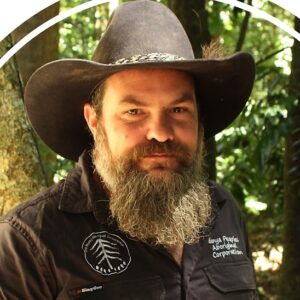
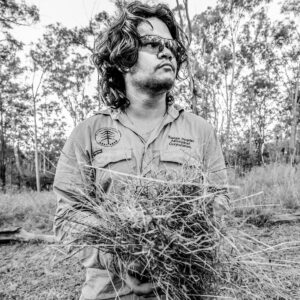
About Paul and Adrian
Paul is the CEO of the Bunya Peoples’ Aboriginal Corporation (BPAC) and has over 20 years’ experience working with Aboriginal communities to re-establish custodial roles for country. Paul has led the delivery of Aboriginal caring for country programs in Tasmania and Southern Queensland, has a bachelor’s degree in environmental science, and a range of qualifications in program development and management, and group facilitation.
Adrian is a proud Wakka Wakka man connected through the Darlo family line to the Bunya Mountains and Darling Downs. Adrian has years of experience working and walking on country for both BPAC and at a personal level. One of Adrian’s key objectives is to understand Phytophthora and its impact on country. Adrian has been working with Louise Shuey and others on soil sampling processes and monitoring potential infections in the Bunya forest for the last two and a half years.
Abstract - Holistic Health of Bunya Mountains' Rainforests: Phytophthora multivora and the dynamics of cultural connections to place
This presentation will highlight the sacred relationship between Bunya custodians and Bunya pines (Araucaria bidwillii), and how emerging threats to the Bunya forest impact cultural obligations associated with Bunyas. The presentation will highlight positive interactions between science and cultural perspectives to better understand Country and design management approaches. The presentation will demonstrate the importance of a holistic cultural lens as a foundation to management planning, and how a continued presence in the landscape provides a more detailed understanding than scientific ‘snapshots’ in isolation. The presentation will also showcase the importance of people and partnerships, to ensure we don’t operate in ‘silos’ and be bound by tenure restrictions.
Northern Connections
Paul Donatiu and Dr Jen Silcock
Project Manager – Queensland Threatened Plant Network
Research Fellow – University of Queensland

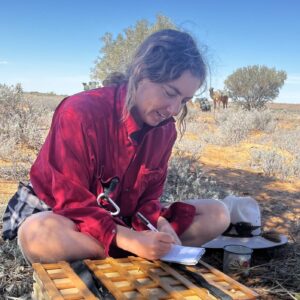
About Paul
Paul Donatiu manages the Queensland Threatened Plant Network. Paul has a study background in architecture, psychology and environmental management, and has practised community development and community education. He has worked for WWF, Greening Australia, Queensland National Parks Association, Griffith University and Healthy Land and Water. Apart from species recovery, Paul’s fields of interest include ecological restoration, fire ecology, landscape ecology, and the management and preservation of cultural landscapes. Paul has also completed a Churchill Fellowship that examined how five national agencies in Europe, USA and South Africa were dealing with climate impacts on their protected areas. In his spare time, Paul can be found wandering the bush adding to his personal visual herbarium, gardening, reading or wrangling his two daughters (not necessarily in that order!).
About Jen
Dr Jen Silcock is a Research Fellow with the School of the Environment at the University of Queensland. She has researched and published widely on threatened species, rangeland ecology, desert wetlands, ethnobotany and landscape history over the past 20 years. She led the National Action Plan for Australia’s Imperilled Plant Species 2021 and serves on various committees and scientific reference groups including the Queensland Species Technical Committee and the Publications Committee for the International Rangelands Congress 2025.
Abstract - Plant conservation in Queensland and the role of the QTPN
Queensland is the most biodiverse State in Australia with over 14,000 species of native plants/allied species and 1424 regional ecosystems. More than one-third of Queensland’s flora are endemic including towering rainforest trees and cryptic desert daisies. Over 1000 plants are listed as threatened in the State, comprising 78% of Queensland’s listed species. Many plant species have a cultural significance that resonates across generations of Traditional Owners. 17 plants species are listed as extinct, and over 100 as Critically Endangered. In direct response to this situation a new group – the Queensland Threatened Plant Network – has been created to inspire and support organisations and individuals committed to the conservation and recovery of Queensland’s threatened plants and ecological communities. This presentation will cover:
- The distribution, characteristics, status of, and threats to Queensland’s threatened ecosystems and plant species.
- How the Network is developing a collective, informed, and collaborative approach to threatened plant conservation in Queensland by coordinating existing and new on-ground effort, education, training, and information exchange.
- How and why community-based environmental groups are integral to recovery efforts including developing and implementing recovery action plans.
- How the Network is conducting detailed flora surveys to build information on poorly known species and locate new threatened species populations.
- How this work is establishing QTPN as a leader in the conservation of threatened flora and providing a platform to guide on-ground recovery effort amongst communities seeking to understand and protect our rarest plant species.
Gerry Turpin
Senior Ethnobotanist, Queensland Herbarium – Dept. of Environment, Science and Innovation
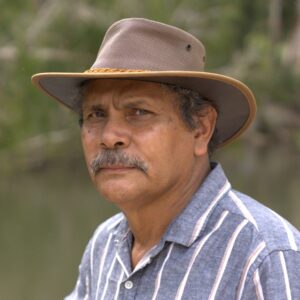
About Gerry
Gerry leads the development of the Tropical Indigenous Ethnobotany Centre (TIEC) in the Australian Tropical Herbarium (ATH) at James Cook University, Cairns. The ATH is a joint venture between James Cook University, CSIRO, and the Queensland Government. He has been employed by the Queensland Government for over 30 years.
Gerry participated in the Queensland Herbarium’s statewide Regional Ecosystem Survey and Vegetation Mapping Project, including carrying out that project in the Channel Country of south-west Queensland for several years before transferring to the Australian Tropical Herbarium.
In 2016, he was a member of the Indigenous Experts Roundtable in reviewing Queensland’s Biodiscovery Act 2004. The Roundtable recommended important changes which were adopted and in September 2020, the Biodiscovery and Other Legislation Amendment Act 2020 reformed the Act to include legal protections for the use of First Nations peoples’ traditional knowledge in biodiscovery to improve the alignment with international standards such as the Nagoya Protocol.
Gerry’s current work as a Senior Ethnobotanist entails travelling to Indigenous communities to engage and foster relationships, and to record and document traditional plant knowledge. Gerry also acts as a bridge between Indigenous Biocultural Knowledge and Western Science to bring researchers and other organisations to partner with traditional owner groups in collaborative research.
Abstract - The Tropical Indigenous Ethnobotany Centre: Saving ancient biocultural knowledge to help provide solutions for current issues
The Tropical Indigenous Ethnobotany Centre (TIEC) was established in 2010 through consultation with Traditional Owners (TOs) from north Queensland and other interested parties. It is unique as it is the first of its kind in Australia and is a concept initiated and driven by TOs. The aim of TIEC is to support TOs to record and document, manage, and protect and sustain their cultural knowledge on the use of plants.
This presentation will provide an overview of the work of TIEC and highlight the importance of collection, documentation, and preservation of Indigenous Biocultural Knowledge (IBK). It will touch on IBK in NRM management, Indigenous Engagement and Protocols, Intellectual Property including the legislation of the updated Queensland’s Biodiscovery Act, and finish with a short summary of three major projects; Mbabaram and Iningai Aboriginal Medicinal Plants and A Deadly Solution: Combining Traditional Knowledge and Western Science for an Indigenous-led bushfood industry.

Gold

